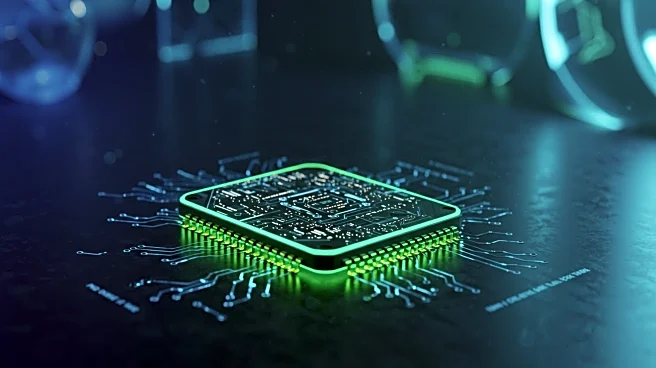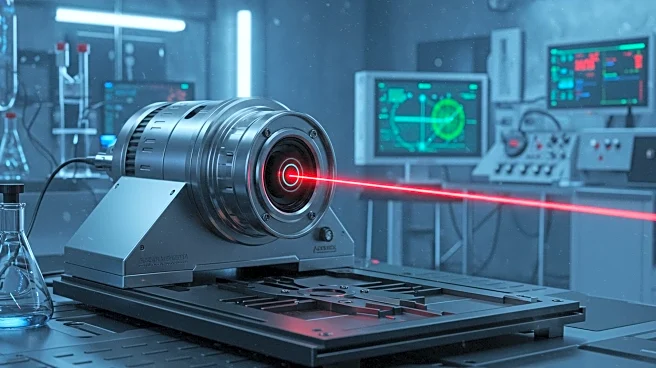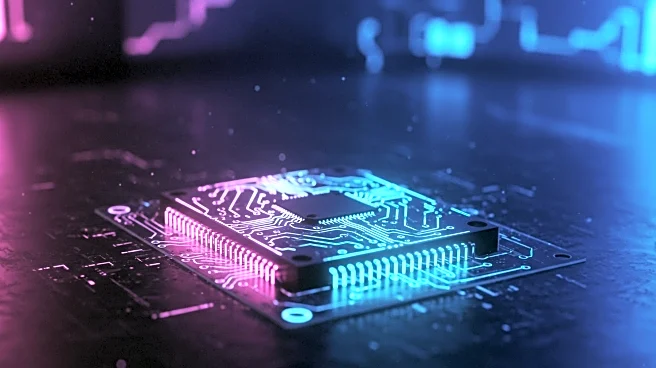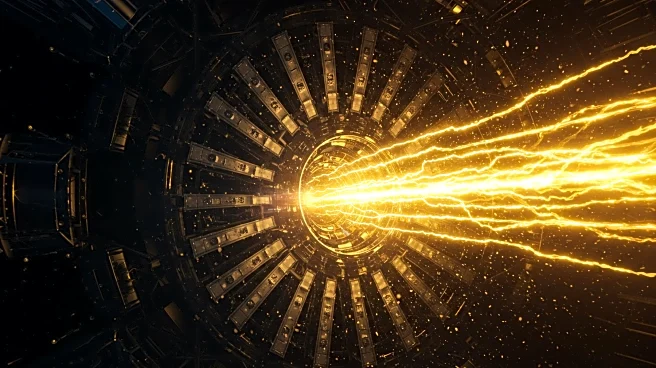What's Happening?
A breakthrough in quantum technology has been achieved by Assistant Professor Aakash Sahai at the University of Colorado Denver. Sahai has developed a silicon-based chip capable of creating extreme electromagnetic fields, which could lead to the development of gamma ray lasers. These lasers have the potential to eradicate cancer cells without harming healthy tissue and could also be used to explore theories such as Stephen Hawking's multiverse. The technology, tested at SLAC National Accelerator Laboratory, allows for high-energy experiments in a compact space, potentially replacing large facilities like CERN's Large Hadron Collider.
Why It's Important?
This development could revolutionize fields such as medicine and physics by providing new tools for cancer treatment and fundamental scientific research. The ability to create gamma ray lasers could lead to precise medical imaging and treatments at the atomic level, offering new ways to combat diseases like cancer. Additionally, the technology could enable scientists to test theories about the universe's structure, potentially confirming or refuting the existence of a multiverse. The compact nature of the chip could reduce costs and increase accessibility for high-energy experiments.
What's Next?
The research team plans to continue refining the chip and laser technique at SLAC National Accelerator Laboratory. While practical applications may be years away, the ongoing development could eventually lead to widespread use in medical and scientific fields. The team is motivated by the potential to improve lives and expand scientific understanding, with provisional patents already secured for the technology.











